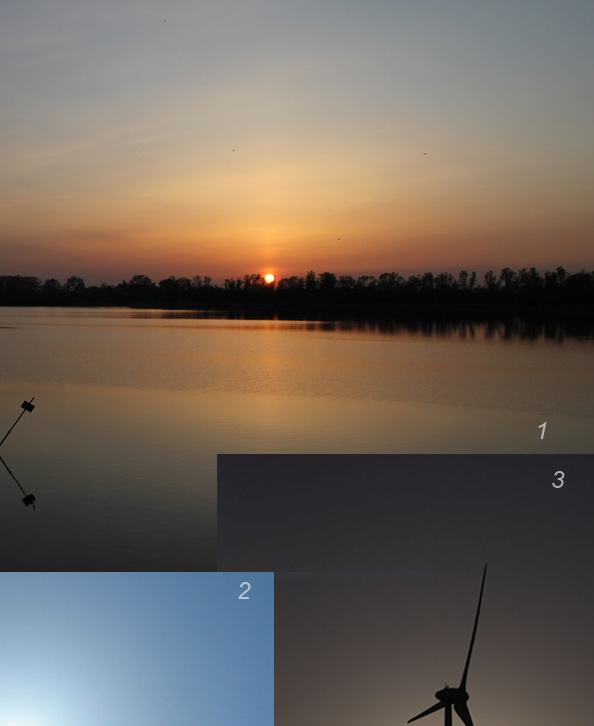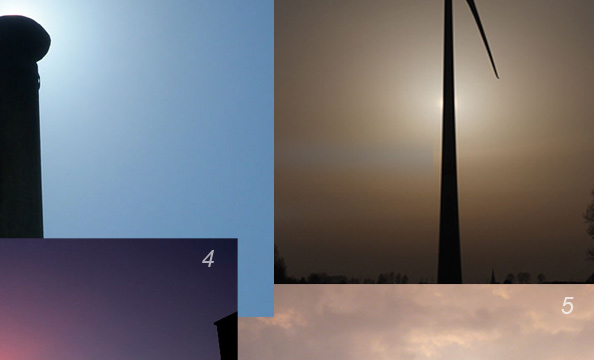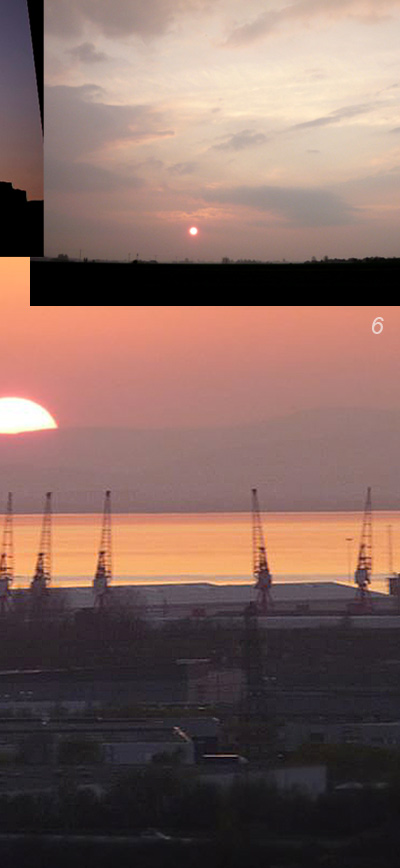Aureoles, Sunsets & Volcanoes
Several recent images where Europe's tropospheric ash clouds might have had an influence. More in earlier OPODs (1,2)
(1) Saclay Pond near Paris on April 18. Yves Gandolphe (site) imaged this hazy rusty brown sunset with yet another faint sun pillar. Faint halos have been noticeable during the ash episode. It could be that the contrail free skies have rendered them more visible!
(2) St Petersburg, Russia. Nikita Kulanov imaged this bright aureole surrounding the sun. Aureoles are light scattered by air molecules themselves, by aerosol or small water droplets and by dust including volcanic ash. An aureole is essentially the central part of a corona but the complete corona is only seen when the scattering droplets or particles all have the same size. The Bishop�s rings produced by very fine volcanic material are huge � much larger than a 22� halo for example.
(3) Belgium April 18. An aureole seen by Koen van Gorp.
(4) Near Paris April 18. A strange red upper tangent arc imaged by Denis Joye. The sun had already set at ground level and the low sun still shining at high altitude was producing the halo. Its rays were reddened by passage through the dusty atmosphere.
(5) Sunset at Zabik�w, Poland by Dariusz Dorosz. The scene is typical of the hazy and subtly hued sunsets seen over Europe � Not at all the blazing colours from major explosive eruptions that produce widely dispersed fine ash and sulfate aerosol high in the stratosphere.
(6) Sunset 17th April over the Severn Estuary looking from near Bristol towards Wales. Imaged by Joanna Baron.
It is not possible to be certain that these are volcanic ash effects because 'ordinary' skies have themselves a tremendous variety of appearances.
All images ©the photographers
|












